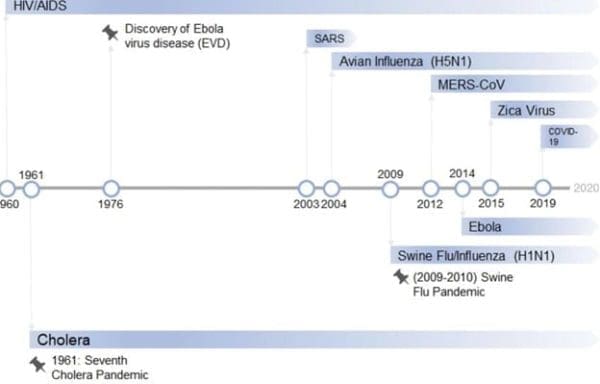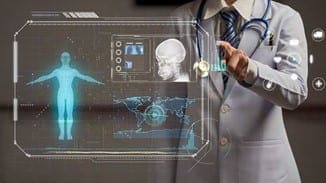
Data science uses scientific methods and algorithms to gain information and insights. With the growth that the technology sector has experienced over the past few years, coupled with the current pandemic situation, data science has an important role to play in the field of healthcare. Courses on data science are becoming increasingly popular among the youth as they realize the growing importance of this skill.
The pandemic has proved this is a skill that will be indispensable in the future. During this time, enlisting for a data analytics course seems like a great option.
Epidemics and Pandemics-
An epidemic has a similar meaning to an outbreak, but it represents a more serious situation, such as the Severe Acute Respiratory Syndrome or SARS epidemic, that occurred between 2003 and 2004. An outbreak is geographically limited, whereas an epidemic is a situation that could spread over a wider area.
A pandemic is a much larger widespread epidemic. Pandemic is most usually global and affects a large number of people. The difference between a pandemic and an epidemic is not the severity of the disease but the number of affected beings. The most recent global pandemic is the Coronavirus Pandemic which started in 2019 in China and has affected the world in ways more than one.

According to reports from the World Health Organization, there have been many outbreaks, epidemics, and even pandemics that have occurred over the years.
Data Science In A Pandemic-
The spread of the COVID pandemic has drawn more focus to data analytics tools, with entities from each sector of the healthcare industry looking for ways to track and contain the virus.
With large amounts of databases needing to be covered to expedite the research process, data science and data analytics have shown promise in aiding the health sector. Researchers and developers are using machine learning, artificial intelligence, and natural processing to monitor and control the coronavirus. Scientists, doctors, researchers, and specialists are trying to uncover how the virus functions- why it impacts some more drastically than others, how it spreads, what measures can be implemented to contain it, and so on. These discoveries can only be driven by data that can be collated, analyzed, and studied.
New cases, virus activity in existing patients, deaths, and positivity rates in health care testing can be compiled with the help of data analysis systems. A 2015 study conducted by the Massachusetts Institute of Technology (MIT) stated that data analysis could positively predict vital information, including the length of hospital care needed and the number of patients requiring surgery and intensive care. This way, data analysis could prevent complications that may arise in the future.
Symptom tracking websites, government-initiated apps, and daily surveys can assess what initial symptoms people experience, places where the transmission rates are high and offer constant updates. With reliable tracking and benchmarking guidelines being put into place, the infection prevalence, daily growth, and transmission dates can be recorded. Recognizing signs and symptoms, following the growth of the virus, and lastly, monitoring the availability of hospital resources provides organization management with massive amounts of information. This information is too much for humans to comprehend, compile and understand on their own. This situation calls for data-driven methods and advanced analytical techniques.

Especially with biomedical research regarding the vaccine advancing every day, information needs to be made as accessible as possible. With variants of the vaccine being introduced to Indian citizens, organizations and hospitals are struggling to cope with the numbers. Accessing the government website, registering for the vaccine, and booking slots has become a task for the majority of the general public. The numbers are massive, and hospital infrastructure is not equipped to deal with such inflow. This is when data analysis comes into the picture, helping the system efficiently divide slots, assign them and bridge the patient-hospital gap.
AI can also help organizations draw on research from the past and apply this knowledge and information to current studies. Scientific literature is vast, and AI can help narrow down this data to what is actually required. Even though there are restrictions on medical records and medical data, due to HIPAA (Health Insurance Portability and Accountability Act)- the amount of accessible data that exists overpowers the percentage of information that cannot be used. The unprecedented impact of the pandemic has resulted in the formation of unprecedented collaborations. These are not only essential but also dire.
Healthcare, academia, and the digital industry must contribute towards a collaborative effort to tackle the problem. This is an interdisciplinary issue. It requires people who are experienced when it comes to artificial intelligence and automation, people who are knowledgeable in medicine, and those who excel at research and innovation. Data, digital help, and human effort are currently the best possible tools to mitigate this global pandemic.
Frequently Asked Questions (FAQ)
What are the benefits of using AI in healthcare?
AI innovations improve accessibility and provide necessary assistance. AI systems assess people’s data to understand the past and present health issues of patients. These AI systems collate this information and compute symptoms and diagnostics. These algorithms have made healthcare processes faster and affordable. Ranging from patient examination to diagnosis, AI makes the process more cost-efficient, labor-saving, systematic, and streamlined.
Can data science and data analytics be learned online?
Data science and data analytics are technology-based skills. The digital medium is as good a way to learn these skills as in a physical classroom. With the help of online courses, you can learn and explore at your own pace. They focus on subjects like Data Structures and Algorithms, Probability, Statistics, Relational databases, etc.




Be the first to comment